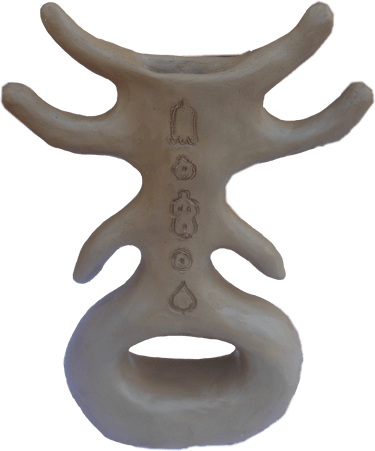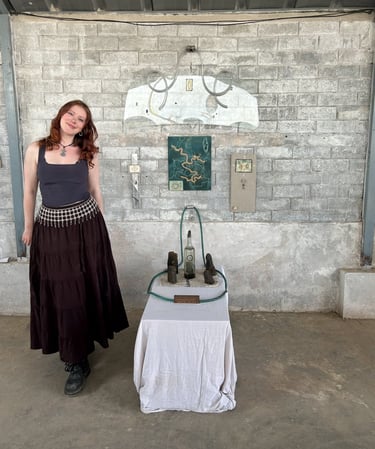
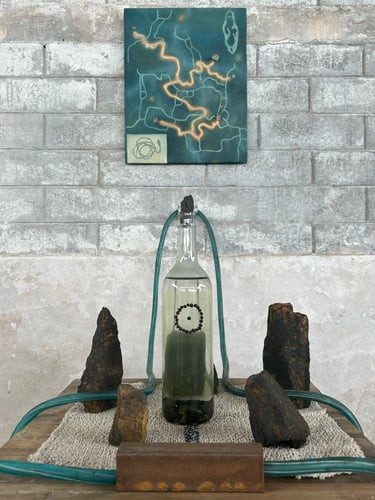
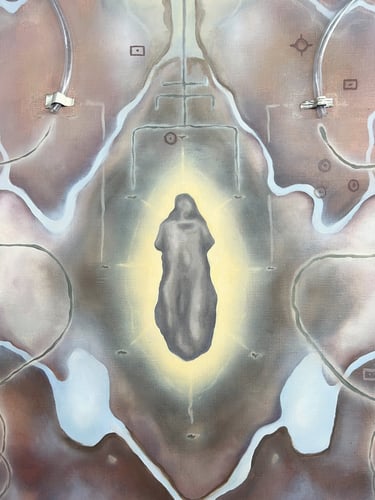
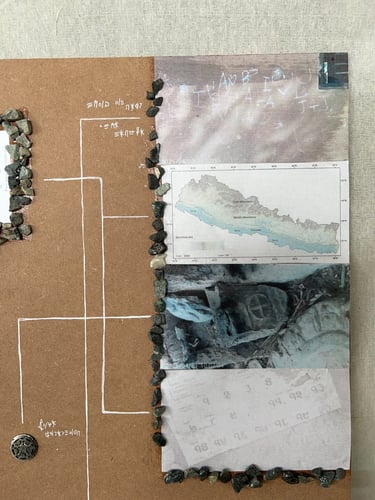
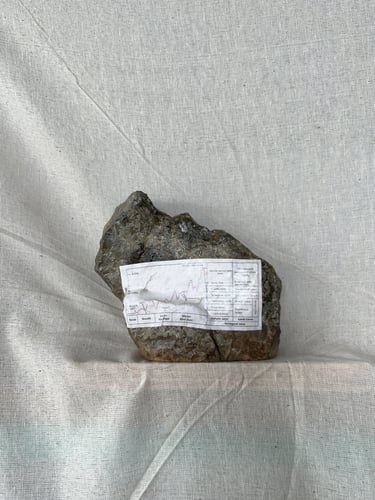
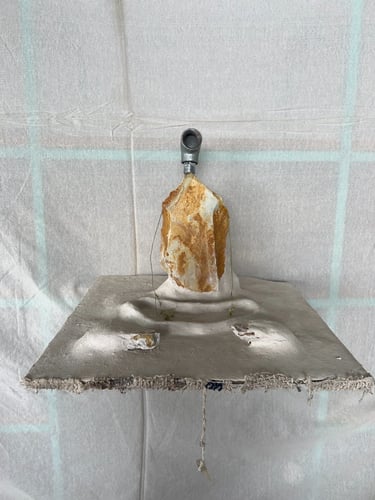
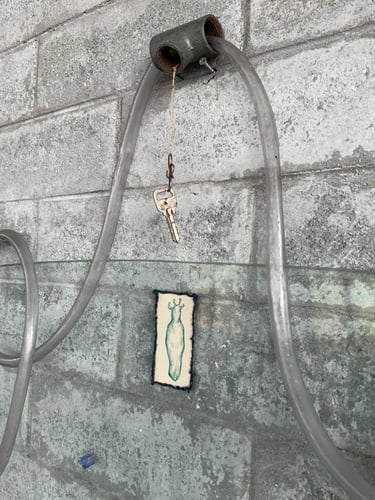
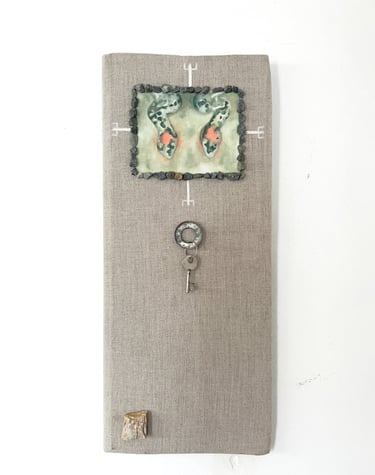
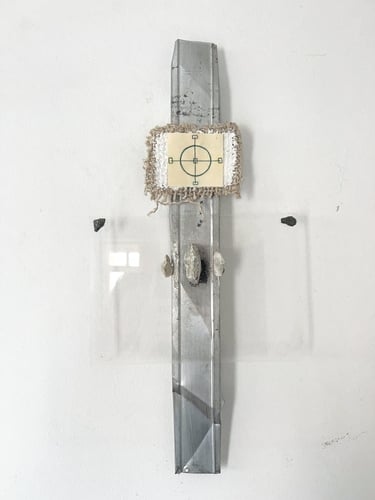
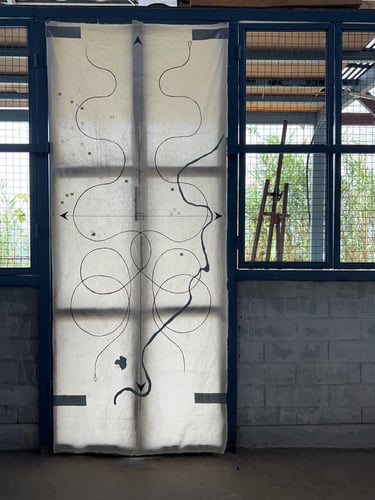
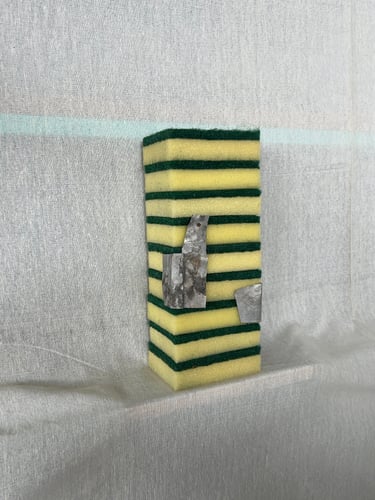
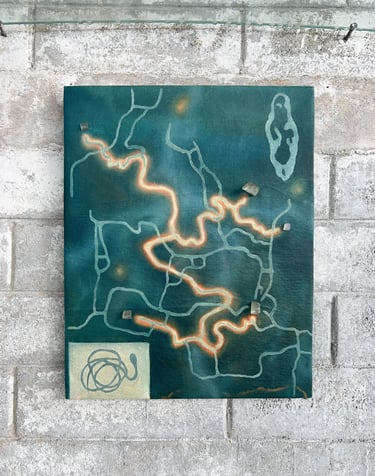
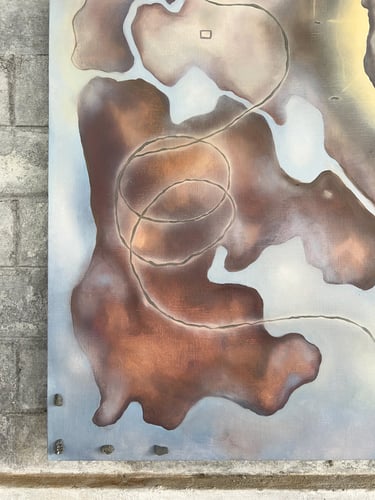

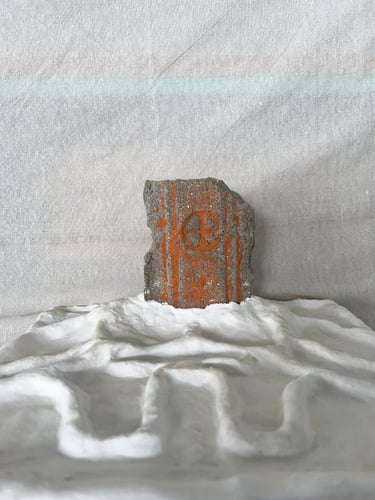
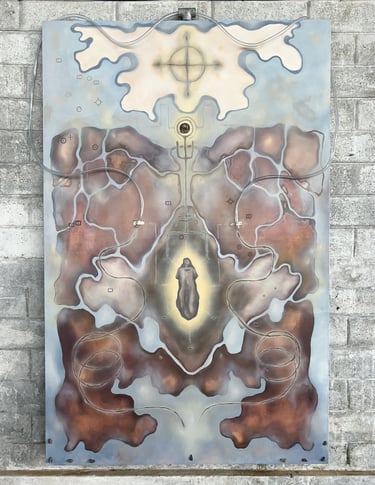
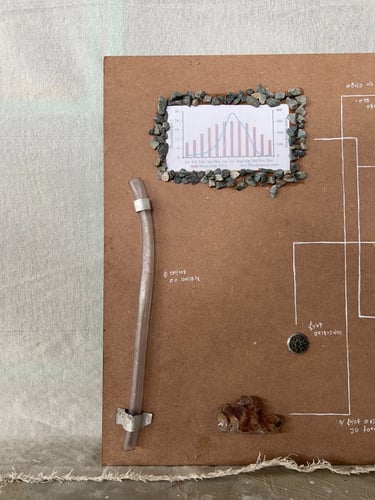
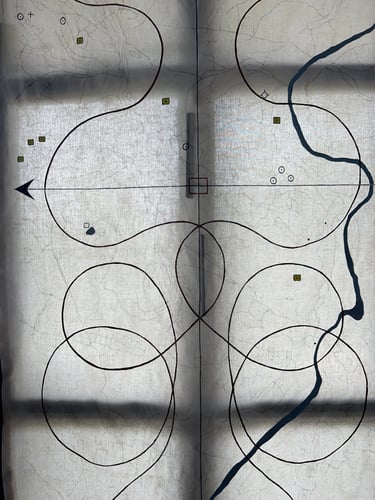
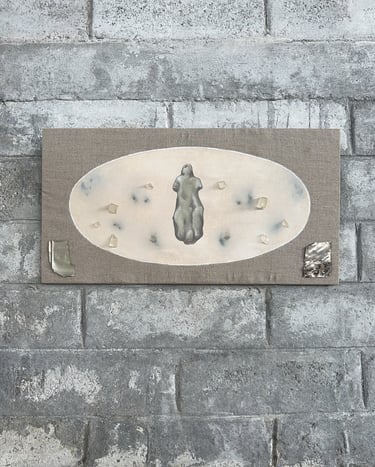
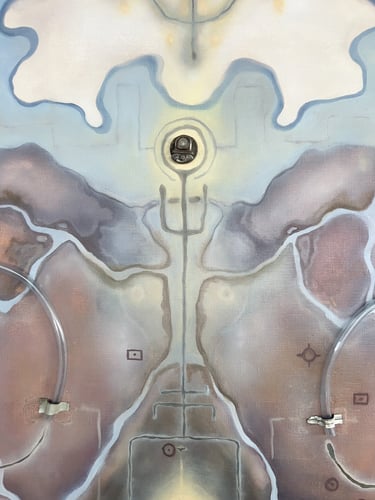
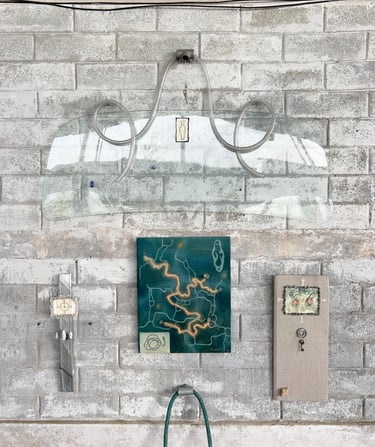





















I was honoured to be awarded this six week, site responsive artist residency. During this time I researched Nepali and Newari folklore, local ecological issues and underground systems, exploring ideas which traversed both scientific and mythological grounds.
After a period of site visits, local studio visits, experimentation and reflection, my body of work, 'Serpent System' was produced, an interdisciplinary research-based installation, spanning painting, sculpture, found object assemblage, collage and audio.
International artist in residence programme 2025
Bikalpa Art Foundation, Kirtipur, Nepal

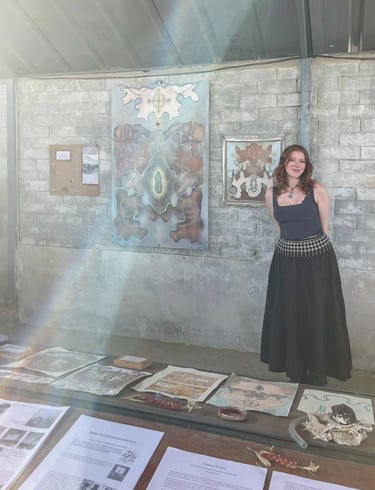
project description
For this six week residency with Bikalpa in Kirtipur, I intended to research and respond to the local area, focusing on ecological and cultural aspects. Prior to arriving, I began my research by looking into the water management of Kirtipur, delving into papers by Professor Gyanu Raja Maharjan. I discovered that the polarity of heavy precipitation and drought throughout the year results in both floods and water scarcity – particularly detrimental to lower income households, and worsened by unsustainable building practices, urbanisation and the deterioration of Indigenous Newar knowledge and processes. Once in Kirtipur, I continued my research with site visits to Taudaha and Chobar Gorge. Interconnected with these sites, the Nagas and beliefs surrounding the genesis of Kathmandu Valley is where my mythological interests began, and throughout my research on Nagas and serpents, I became particularly drawn to their connection to the flow of water, precious minerals and metals, and the underground realm.
I then became inspired by a nature spirit, the Yaksha, particularly as represented in ancient stone figurines. I was interested in how old sacred statues deteriorate over time, slowly returning to their natural stone state. The Yaksha is a mysterious and benevolent folkloric creature, connected to the underground and wealth. A story I learned is that the caves in Chobar are believed to connect many important sites in the valley, such as Swayambhu, Pashupati and the Durbar Squares. I became fascinated with the idea of exploring Kathmandu underground, guided by the Yaksha and Naga as magical forces of the dark underground networks - calling on their guidance for issues we face above the surface.
The five elements in Hinduism and Buddhism - Fire, Air, Earth, Water and Ether – are recurring elements in many of my pieces. Not only relating to the sacred qualities of water and earth, the elements are often represented in Paubhas as compasses, each element assigned to a direction. Compasses, directions and cartography are key themes in this project as, while mapping the water and cave systems, I am also responding to my own internal mapping of Kathmandu, linking together places and memories from a previous time living here in 2023. The valley has a very special place in my heart and during my time away I dreamt of returning, so exploring Kathmandu has been a surreal and beautiful experience.
I consider my works to be modular installations. They can be fluidly reconfigured into different compositions, including various relevant ephemera and research as part of the final piece. I take inspiration from the practice-led research concept, particularly influenced by artists Susan Schuppli and Basia Irland, whose work embodies the investigative process.
All the elements in this installation are products of exploration, experimentation and visualisation. Visualising certain networks which I have been enchanted by, such as the water system and cave networks, is how my paintings take shape. The focus on underground and hidden networks relates to my ongoing interest in mycelium networks, which forms the basis of my own spiritual belief - that all of the physical world is connected by an intangible, sentient, glowing web, only visible with meditative practice.
Animistic approaches have influenced my use of material. I have been thinking of the spirit of rocks and minerals, collecting them from around the residency site. Ancient fertility rituals consider caves to represent mother earth’s womb, suggesting the stone itself to have an essence of aliveness. Many of my found objects are discarded and ordinary materials, not generally considered to be sacred in any sense, but my process has been led by an urge to reconsider all material as possessing the divine - while also collecting items which evoke labour and construction.
My works aims to foster hybridity, merging contrasting pursuits of curiosity. While addressing current and urgent issues, such as water scarcity, I find it important to balance the empirical with mythological, locating a harmonious midpoint between the known and unknown, analytical and imaginal, progressive and atavistic, understanding and feeling. I am led by synchronicities to draw parallels between these opposing perspectives, and motivated by sensitive considerations of the land we live on, dialectically invoking both science and spirituality to collaboratively aid in today's issues.
gallery
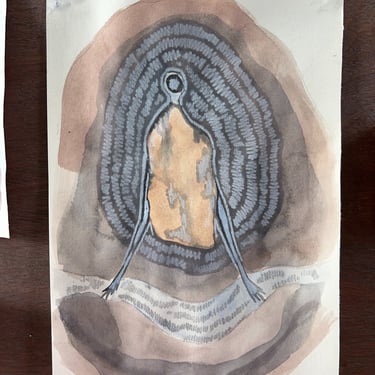
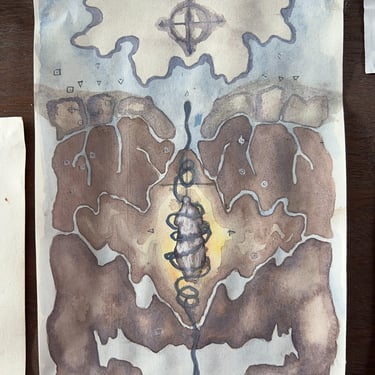
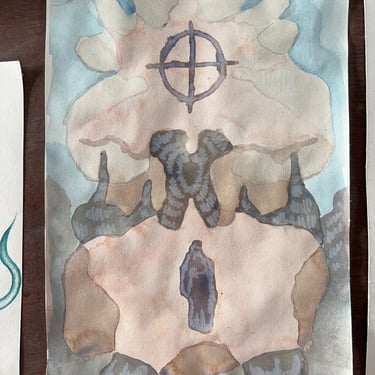
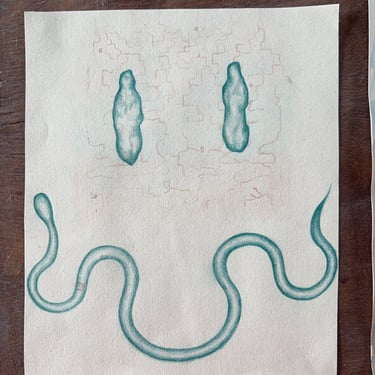
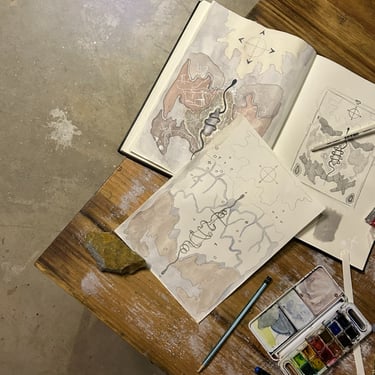
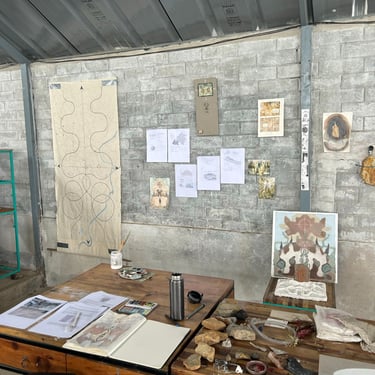
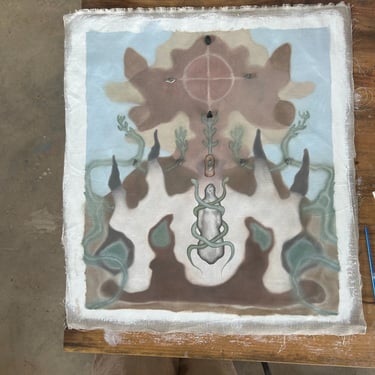
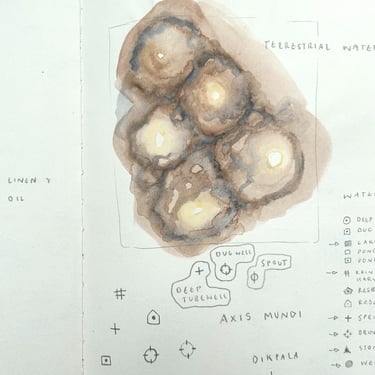
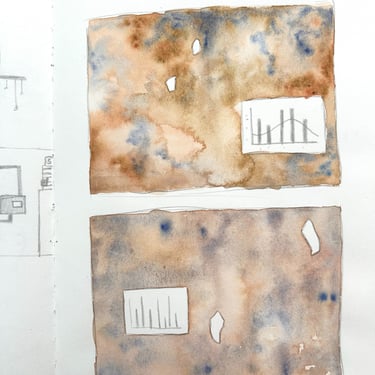
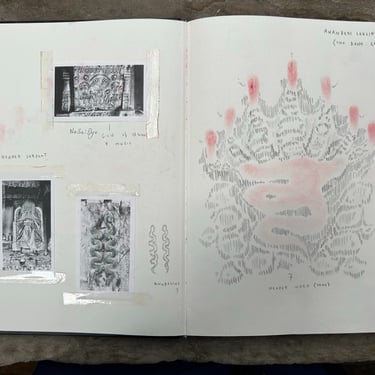
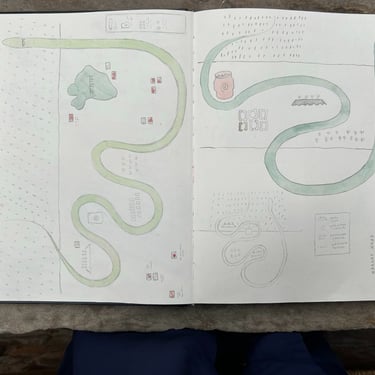
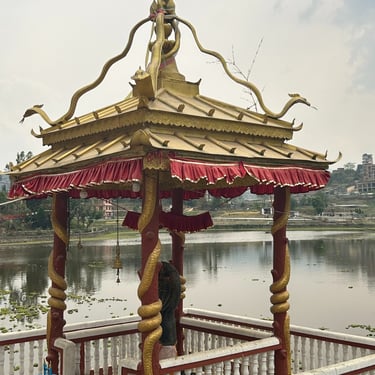
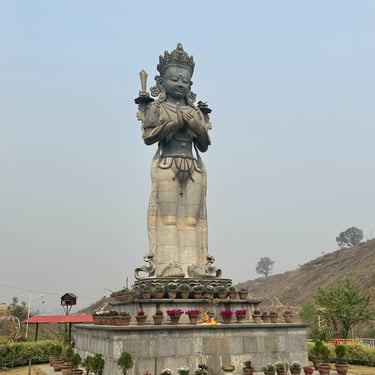

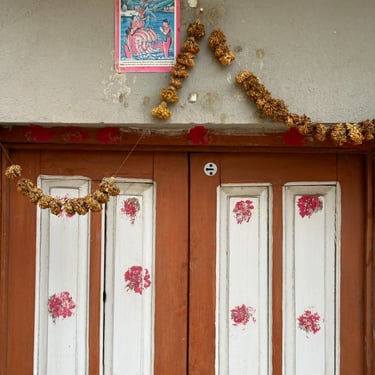
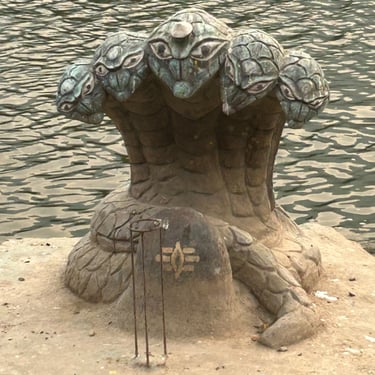
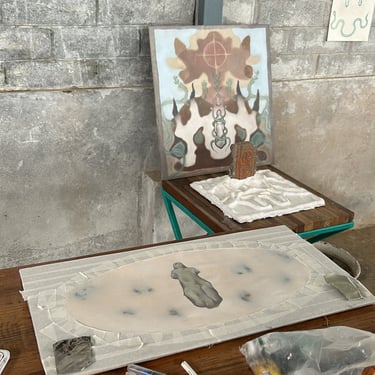
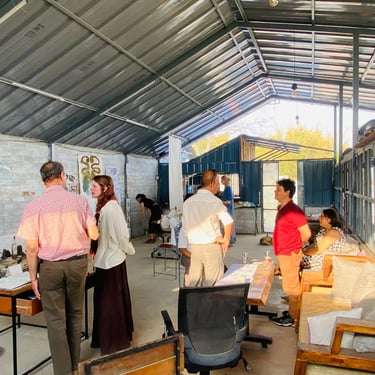
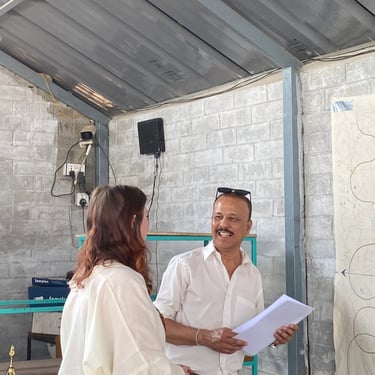
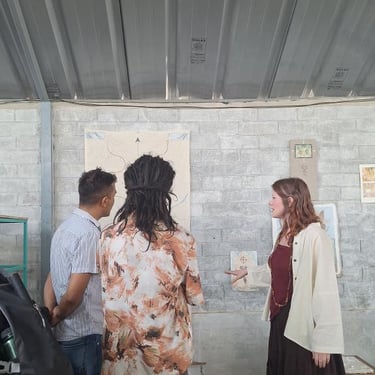
in progress and research
open studio, exhibition and artist talk
